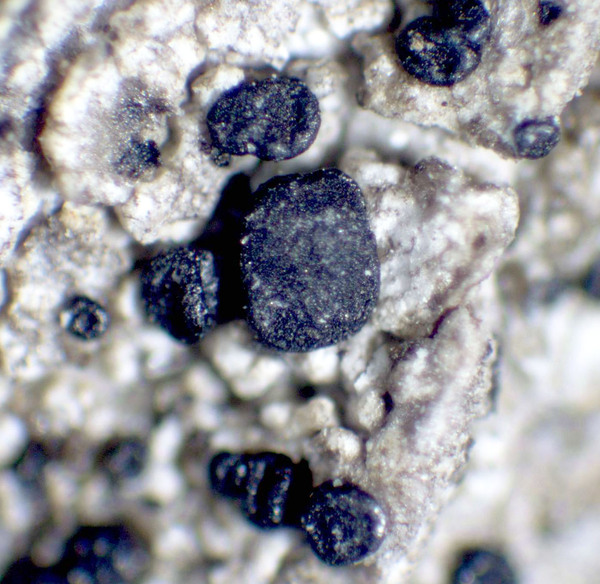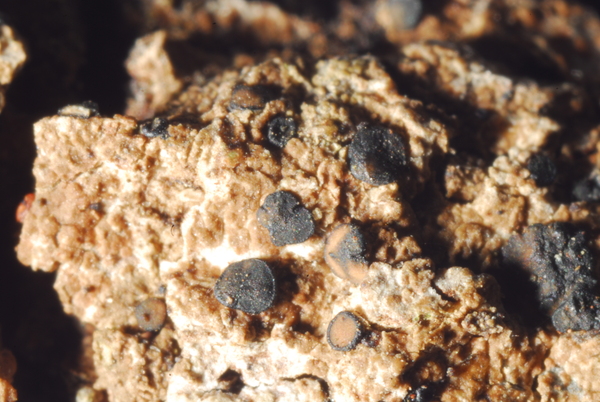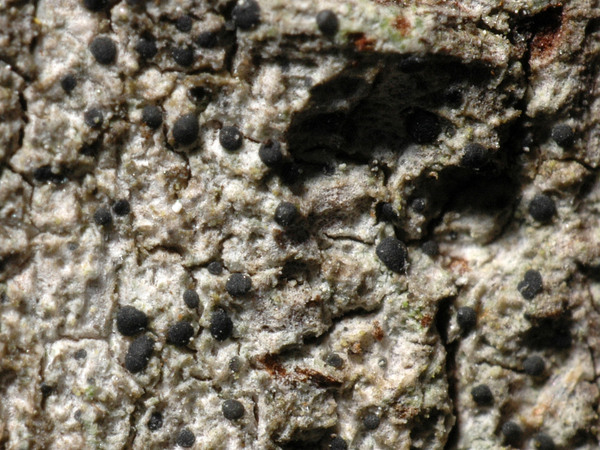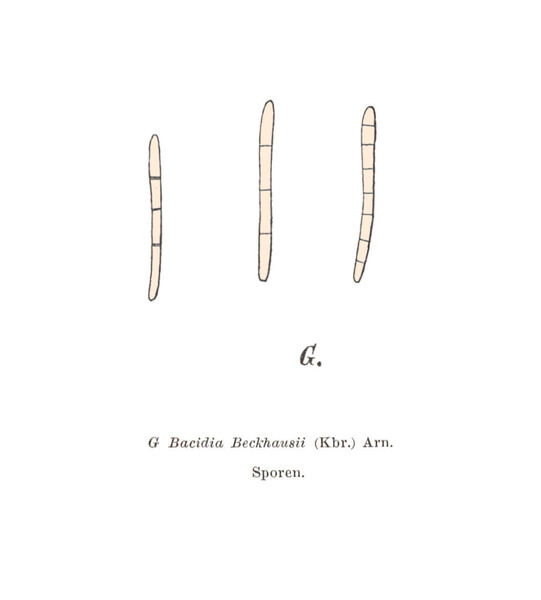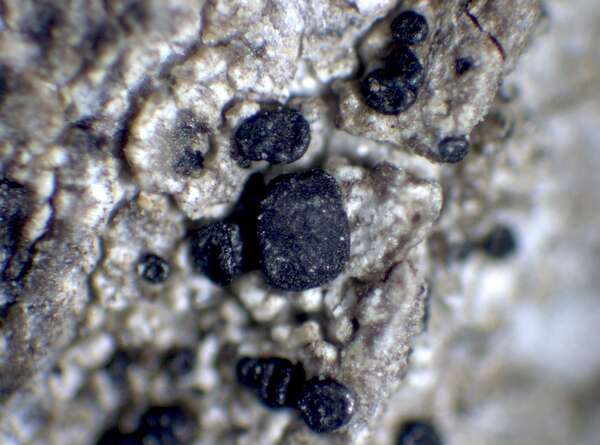Biatora beckhausii (Körb.) Tuck.
Syn. N. Amer. Lich., 2: 46, 1888. Basionym: Bacidia beckhausii Körb. - Parerga Lichenol.: 134, 1860.
Synonyms: Bacidia beckhausii var. obscurior Th. Fr.; Bacidia beckhausii var. poliaena (Nyl.) Arnold; Bacidia minuscula Anzi; Bacidia stenospora (Hepp) Arnold; Lecidea denigrata var. bacidiella Vain.; Micarea beckhausii (Körb.) Vězda; Micarea minuscula (Anzi) Vězda
Distribution: N - Frl, TAA (Nimis & al. 2015, Nascimbene & al. 2022), Lomb, Piem (Isocrono & al. 2004). C - Tosc (Loppi & al. 1994, Loppi & Putortì 2001), Abr (Di Santo & Ravera 2012, Corona & al. 2016, Gheza & al. 2021), Sar (Zedda 2002, 2002b, Rizzi & al. 2011, Di Nuzzo & al. 2022). S - Cal (Puntillo 1996, Puntillo & Puntillo 2004).
Description: Thallus crustose, endosubstratic or thinly episubstratic, continuous, smooth or slightly warted, pale grey or almost white. Apothecia biatorine, grey to black, often with a bluish tinge when wet, sessile and constricted at base, 0.3-1(-1.5) mm across, with a flat to finally convex, sometimes thinly white-pruinose disc, and thin, often finally excluded proper margin. Proper exciple 15-40 µm wide laterally, usually without crystals, colourless or pale green in upper and outer parts, K+ violet, C+ fleeting violet, N+ red, the edge without cells with enlarged lumina; epithecium olive-green to blue-green, K+ violet, C+ fleeting violet, N+ red, sometimes with small granules dissolving in K; hymenium colourless, sometimes with green vertical streaks, 35-55 µm high; paraphyses simple or sparingly branched in upper part, 1-1.5(-2) µm thick at mid-level, the apical cells to 2.5 µm wide; hypothecium colourless. Asci 8-spored, cylindrical-clavate, with a K/I+ blue apical dome penetrated by a narrow, K/I- apical cushion surrounded by a narrow, deeply K/I+ blue zone, the wall K/I- but surrounded by a I+ red-brown and K/I+ blue outer layer, the ocular chamber small, Biatora-type. Ascospores (1-)3-(7-)septate, hyaline, bacilliform, straight or slightly curved, (15-)17-26(-32) x 1.5-2.7 µm. Pycnidia half-immersed in thallus, black around the ostiole, the wall olive-green, K+ violet. Conidia 1-celled, oblong-ellipsoid, 3-4 x 1-1.5 µm. Photobiont chlorococcoid, the cells 8-14 µm wide. Spot tests: thallus K-, C-, KC-, P-, UV-. Chemistry: thallus without lichen substances.Note: a mainly mild-temperate lichen found on bark of broad-leaved trees (especially Acer and Fraxinus) in open, humid, mostly montane woodlands, rarely reaching the subalpine belt on the stems of small shrubs. It is included in the Italian red list of epiphytic lichens as “Near-threatened” (Nascimbene & al. 2013c).
Growth form: Crustose
Substrata: bark
Photobiont: green algae other than Trentepohlia
Reproductive strategy: mainly sexual
Commonnes-rarity: (info)
Alpine belt: absent
Subalpine belt: extremely rare
Oromediterranean belt: absent
Montane belt: very rare
Submediterranean belt: extremely rare
Padanian area: absent
Humid submediterranean belt: very rare
Humid mediterranean belt: very rare
Dry mediterranean belt: absent

Predictive model
Herbarium samples
Growth form: Crustose
Substrata: bark
Photobiont: green algae other than Trentepohlia
Reproductive strategy: mainly sexual
Commonnes-rarity: (info)
Alpine belt: absent
Subalpine belt: extremely rare
Oromediterranean belt: absent
Montane belt: very rare
Submediterranean belt: extremely rare
Padanian area: absent
Humid submediterranean belt: very rare
Humid mediterranean belt: very rare
Dry mediterranean belt: absent

Predictive model
| Herbarium samples |
 INDEX FUNGORUM
INDEX FUNGORUM
 GBIF
GBIF
 DOLICHENS
DOLICHENS
